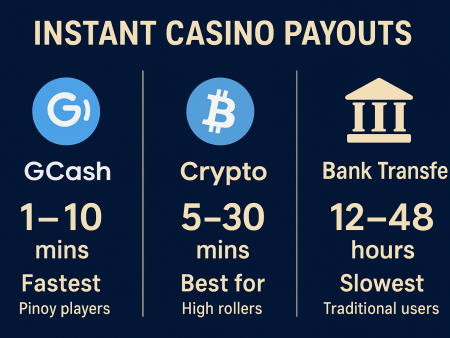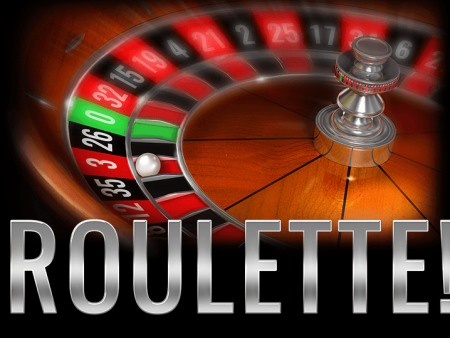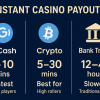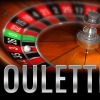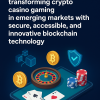Mobile Legends: Bang Bang continues to dominate the global mobile MOBA scene with millions of players and record-breaking esports events, making it the premier choice for fans and bettors alike.
When Mobile Legends: Bang Bang (MLBB) first launched in 2016, it wasn’t trying to reinvent the wheel. What Moonton got right was simplicity: fast games, tight thumb-friendly controls, and smooth performance even on entry-level devices. It was a game built for mobile from the ground up, and players across Southeast Asia and beyond jumped in by the millions.
Fast forward to 2020, Riot Games responded with League of Legends: Wild Rift, a polished adaptation of their PC juggernaut, aiming to bring the authentic Summoner’s Rift experience to the mobile space. On paper, the pedigree of Riot’s brand should have been enough to crush the competition. But in reality, the “copycat” that Riot sued multiple times—MLBB—has continued to dominate the global scene, both in player count and in esports betting relevance.
So why has MLBB surged ahead while Wild Rift lags behind, and what does this mean for esports fans and bettors looking to get in on the action?
Accessibility vs. Complexity
The secret to MLBB’s success is accessibility. Moonton’s mobile-first philosophy makes it easy for anyone to jump in and play:
- Fast matchmaking & short games: Within seconds, players are in a lobby, and matches rarely last beyond 15–20 minutes. This means casual gamers can squeeze games into daily routines—commutes, study breaks, or downtime at work.
- Simple kits, low learning curve: Most heroes come with three main abilities, easy for beginners to understand. Even when you pick up a complex hero like Fanny, you can still contribute to your team within your first few matches.
- Device-friendly performance: The game runs well on budget smartphones, a crucial factor in SEA and APAC regions where not everyone owns high-end devices.
The result? MLBB has smashed 500 million downloads on Google Play and sits at over 42 million monthly active users in 2025. That’s the kind of base that fuels not only casual play but a massive betting market when pro play kicks off.
Wild Rift, meanwhile, stuck closely to its PC roots. It’s a game that demands precision mechanics and deep macro knowledge: skillshots, jungle timings, runes, and complex builds. Matches often stretch longer than MLBB’s, and missing a Blitzcrank hook or failing to catch Draven’s axes can turn the tide. For veterans of League of Legends PC, this is familiar ground. For mobile-first players? It can feel punishing.
The problem is that Wild Rift requires focus and time—two things most mobile gamers don’t have in abundance. While MLBB is “pick up and play,” Wild Rift is “sit down and commit.” That gap has been decisive.
The Money Game: Skins, Passes, and Value
For betting markets, player engagement translates directly to viewership and odds-making opportunities. MLBB has kept its player base hooked with consumer-friendly monetisation:
- Cheaper skins and battle passes make premium content attainable for a wide player base.
- Promo Diamonds events encourage players to log in and play more often, driving engagement and keeping the ecosystem alive.
- Fast balance patches ensure a dynamic meta, keeping pro play unpredictable—something bookmakers pay close attention to.
Wild Rift, on the other hand, leans into the prestige model Riot has built on PC. Premium-priced skins and more expensive passes make its cosmetics more exclusive, but less widespread. With a smaller player base comes smaller hype around events—and lower betting liquidity.
Esports: The Betting Battleground
This is where MLBB has truly pulled away. Betting follows eyeballs, and Moonton has created one of the most vibrant esports ecosystems in mobile gaming.
- MPL (Mobile Legends Professional League): Regional leagues in Indonesia, the Philippines, Malaysia, Brazil, Cambodia, and more. These leagues are culturally integrated, with broadcasts in local languages and references that make them feel homegrown.
- M-Series World Championship: The crown jewel of MLBB esports. The M6 Championship drew over 4 million peak viewers, while M5 in 2023 peaked above 5 million concurrent viewers, making it the most-watched esports finals of that year.
- Household names: Pro players in countries like Indonesia and the Philippines aren’t just competitive stars—they’re local celebrities, fueling fan loyalty and betting excitement.
This grassroots-to-global pipeline gives MLBB constant, year-round events for bettors to engage with. Whether it’s a weekly MPL fixture or the global showdown of the M-Series, sportsbooks can confidently post lines and props knowing the demand is there.
Wild Rift’s story is far different. Riot tried to force its PC playbook into the mobile esports space but stumbled:
- The Icons Global Championship 2022 peaked at just 54,000 viewers.
- Riot later withdrew official esports support outside Asia, leaving regions like North America and Brazil with only small third-party tournaments.
- Today, Wild Rift is heavily concentrated in China under the Wild Rift League Asia, but its international footprint is almost nonexistent. Its most recent finals in 2023 drew fewer than 10,000 peak viewers—hardly worth sportsbooks’ attention.
Meanwhile, Honor of Kings (HoK), China’s true mobile MOBA giant, hit over 650,000 peak viewers at the 2025 HoK World Cup. Together with MLBB, HoK forms the backbone of mobile esports betting markets.
Betting Outlook: Where to Put Your Money
For bettors in 2025, here’s the lay of the land:
- MLBB is the safer and more lucrative betting ecosystem. With its global MPL structure, constant tournaments, and massive viewership, it offers frequent matches, strong liquidity, and dynamic odds. Expect moneylines, handicaps, and prop bets on player performance to remain staples.
- Honor of Kings is a rising force. Particularly in China and increasingly beyond, HoK offers betting opportunities with robust regional leagues and international competitions.
- Wild Rift is high-risk, low-reward. Unless Riot reinvests in its competitive scene outside Asia, betting options will remain thin. The game is kept alive by die-hard fans, but without widespread tournaments, it can’t compete with MLBB or HoK in the betting space.
Conclusion
Mobile Legends: Bang Bang didn’t just win the popularity contest—it built a sustainable betting ecosystem by prioritising accessibility, inclusivity, and cultural integration. Its esports scene thrives from grassroots to world championships, offering constant action for fans and bettors alike.
Wild Rift, despite Riot’s legendary brand and polished execution, has struggled with accessibility, long matches, and inconsistent esports support. While it offers depth for hardcore MOBA players, it doesn’t translate into the kind of global viewership that fuels betting markets.
For now, the hierarchy is clear: MLBB sits at the top, HoK is charging hard behind it, and Wild Rift is fighting to stay relevant. If you’re betting in 2025, Mobile Legends is the game to watch—and wager on.
FAQs
Is MLBB more popular than Wild Rift in 2025?
Yes. With over 42 million active monthly players compared to Wild Rift’s estimated 3.5 million, MLBB dominates globally, especially in SEA and APAC.
Which game has better betting opportunities?
MLBB. Its global esports ecosystem provides constant events with massive viewership, making it a natural betting market. HoK is also strong, while Wild Rift remains niche.
Should I play MLBB or Wild Rift in 2025?
If you’re a bettor, watch MLBB. If you’re a casual player, MLBB’s accessibility makes it the better choice. If you’re a League veteran craving depth, Wild Rift still has appeal—but don’t expect the same thriving esports scene.
